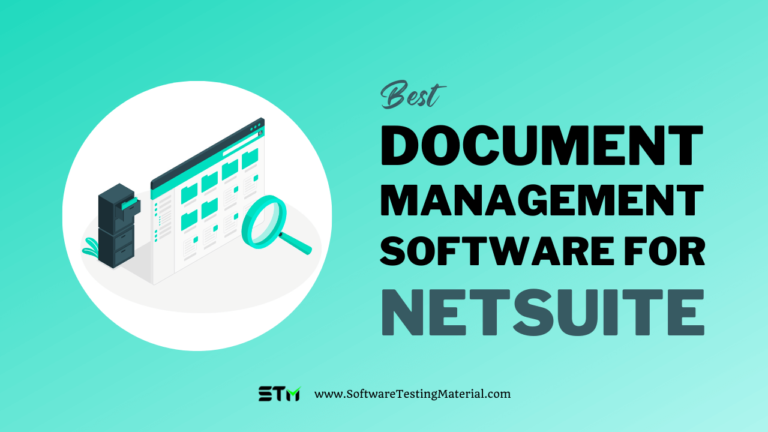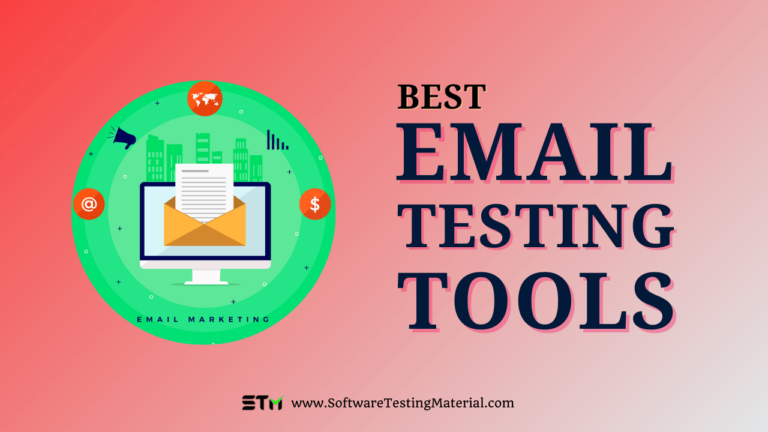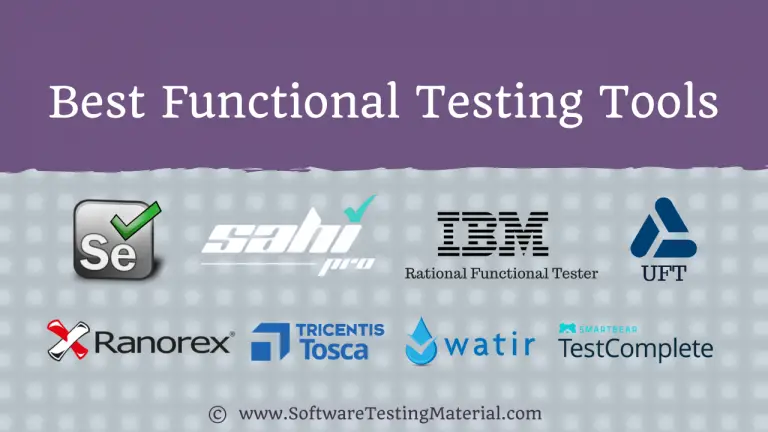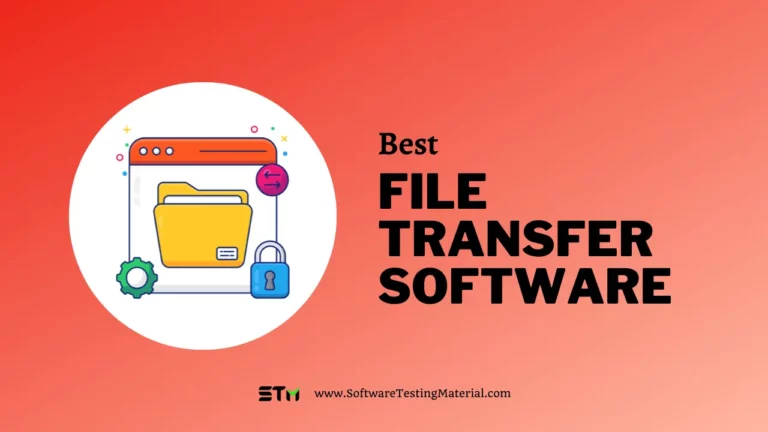15 Best IT Automation Tools in 2025
The importance of IT automation continues to grow for businesses aiming to streamline operations and boost efficiency. The market is filled with innovative IT Automation Tools designed to automate a range of IT tasks, from routine maintenance to complex processes.
This article explores the best IT automation software available in the market, offering insights into their features, benefits, and how they can help your business thrive in the digital age.
Whether you’re a small business or a large enterprise, discovering the right IT Automation tools can save time, reduce errors, and ultimately enhance productivity.
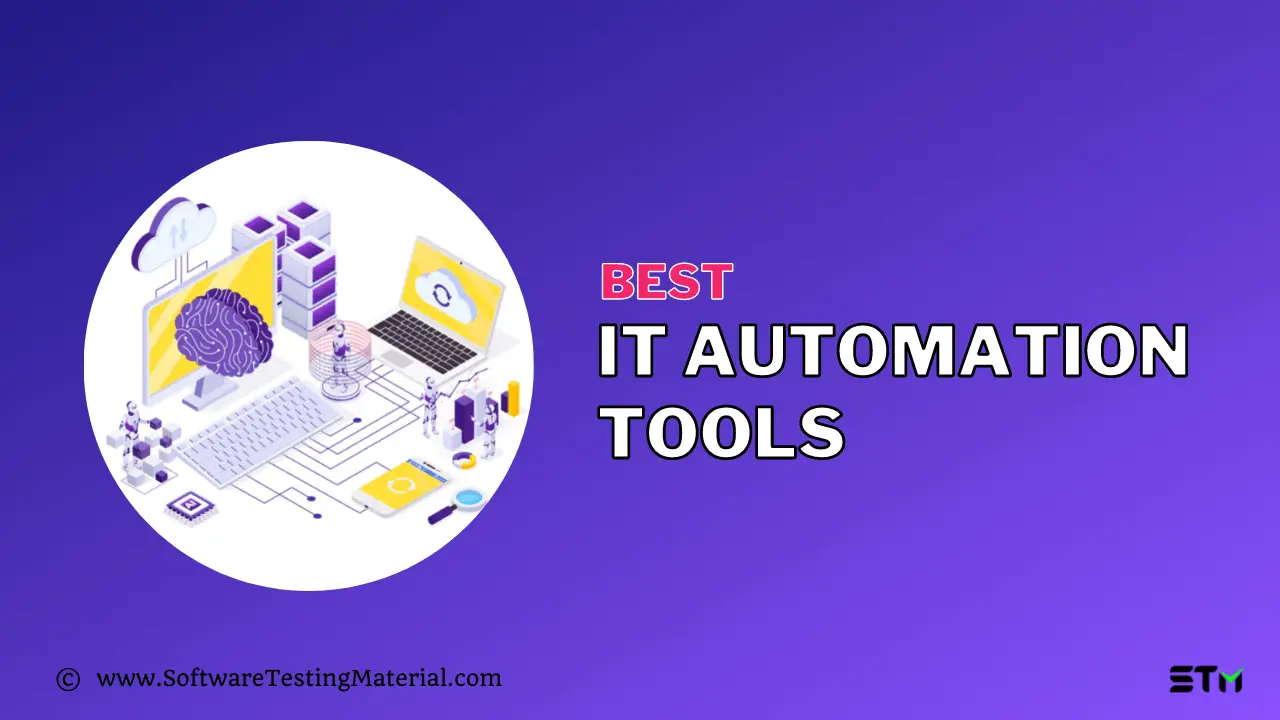
Comparison – Best IT Automation Software Tools
| Name | Logo | Deployment | Pricing | Link |
|---|---|---|---|---|
| ActiveBatch |  | On-premises, Cloud-based & Hybrid. | 30-day free trial available. Contact them for a quote. | Learn more |
| RunMyJobs by Redwood |  | SaaS, On-premises, Cloud-based & Hybrid. | 30-day free trial available. Consumption-based pricing model. | Learn more |
| Tidal Software |  | On-premises, Cloud-based & Hybrid. | 30-day free trial available. Contact them for a quote. | Learn more |
| ManageEngine Endpoint Central |  | On-premises, Cloud-based & Hybrid. | Contact them for a quote. | Learn more |
| Stonebranch |  | On-premises, Cloud-based & Hybrid. | Contact them for a quote. | Learn more |
What is IT automation software?
IT automation software is a tool that allows businesses to automate their IT processes and workflows with minimal human effort. It can handle a variety of tasks, from managing software updates and backups to orchestrating complex operations across different platforms.
By utilizing automation software, companies can ensure that these tasks are completed consistently and accurately, which reduces the potential for human error and enhances overall efficiency.
Features of IT Automation Software
- Time Saving: Automates repetitive tasks, freeing up employees to focus on more strategic work.
- Increased Efficiency: Streamlines processes, reducing errors and improving overall workflow.
- Cost Reduction: Lowers operational costs by minimizing the need for manual labor and optimizing resource usage.
- Scalability: Easily adapts to growing needs, allowing businesses to expand without bottlenecks.
- Consistency: Ensures tasks are executed the same way every time, maintaining high quality standards.
- Improved Accuracy: Reduces the chance of human error, leading to more reliable outcomes.
- Enhanced Security: Automates monitoring and alerts, quickly identifying and responding to potential security threats.
- User-Friendly Interface: Designed for ease of use, making it accessible to both IT professionals and non-technical staff.
- Customizability: Offers the flexibility to tailor workflows to meet specific business requirements.
List of IT Automation Tools
#1. ActiveBatch

ActiveBatch is one of the top IT automation tools available in the market. It can be used to integrate, automate, and orchestrate your entire IT process. This tool features automation capabilities that reduce complexity and build IT workflows 50% faster. For the seamless integration and coordination of IT Process Automation tasks, it provides low-code workflow automation and the drag-and-drop feature.
ActiveBatch has features that will help you to monitor and manage distributed IT environments. It also enables users to innovate and drive digital transformation efforts.
Features:
- You can decrease slack time and improve job success rates with its rich, event-driven architecture and customizable date/time scheduling options.
- It offers a process modeling feature helpful for developers in optimizing and testing workflows before going to production.
- It has Intelligent Automation Tools that use Machine Learning as well as AI.
- Change management tools offered by ActiveBatch help in managing objects across different scheduling environments.
Verdict: It is a great low-code tool to automate your IT tasks. You can also customize the alerts and help you with improving the workload execution. Its integrated Jobs Library feature will help you streamline development and automate faster.
Pricing: They offer a 30-day trial. Contact them for a quote.
Don’t miss: ActiveBatch Workload Automation Tool Hands-on Review
#2. Redwood RunMyJobs

Redwood RunMyJobs is a powerful workload automation platform that helps organizations automate and manage their business processes. It enables organizations to streamline their operations and improve efficiency.
It also offers a range of features and tools to help organizations manage their workloads. Redwood RunMyJobs is a scalable and robust platform that can be used by small and large businesses alike.
Redwood RunMyJobs is easy to use and provides users with the ability to create processes, schedule jobs, deliver real-time results, monitor jobs, and reduce manual intervention.
RunMyJobs keeps a clean core by avoiding customization and integrating with SAP RISE, S/4HANA, BTP, and other SAP platforms without special software or infrastructure.
Features:
- Redwood allows you to automate data pulls from any application or database, such as Hadoop.
- It provides tools for data feeds, dashboards, and reporting, as well as business intelligence solutions.
- Redwood’s low-code method makes it simple to get more automated usage across IT departments and business users. Securely move, copy, and manage hundreds of millions of files with Managed File Transfer Automation.
- The program has security and availability features built in.
Verdict: Redwood RunMyJobs offers a wider range of features and functionalities. It’s compatible with all major operating systems and allows us to automate anything. It has all the connections you’ll need. On-premise, cloud, and hybrid automation are all covered by it. It comes with unbeatable protection and pricing.
Pricing: They also offer a free demo. Contact them for a quote.
Don’t miss: RunMyJobs by Redwood Workload Automation Tool Hands-on Review
#3. Tidal Software

Tidal IT Automation Software is easy to use and deploy, making it an ideal solution for organizations of any size. The software can be deployed quickly and requires minimal maintenance, allowing users to focus on optimizing their operations instead of worrying about technical complexities.
With its user-friendly interface, users can quickly create and manage jobs without requiring specialized technical knowledge.
The software’s powerful set of features and analytics can help users make better decisions while ensuring their data is secure.
Tidal IT Automation Software is an excellent choice for organizations looking to automate their processes and optimize resource utilization. It can be easily deployed and requires minimal maintenance, allowing organizations to focus on what matters most – optimizing their operations.
Features:
- With Tidal Software, you can effortlessly exercise total control of your operations with its impressive features such as job scheduling, resource optimization, workload management and comprehensive system monitoring. This powerful software allows for maximum efficiency in a matter of moments.
- This platform provides users with an array of analytics that enable them to make informed decisions and gain powerful insights into their operations. With this innovative tool, they can unlock the full potential of their business.
- Orchestrate workflow processes for your business, regardless of whether they are running in-house, through cloud computing, or a combination of both.
- Streamline your enterprise systems with over 60+ seamlessly integrated integrations.
Pricing: Contact them for a quote.
Don’t miss: Tidal Workload Automation Tool Hands-on Review
#4. ManageEngine Endpoint Central
Best for automating endpoint management and security activities, from onboarding to retirement across hybrid workspace and highly heterogeneous OS ecosystems, all from a single console.

Endpoint Central is a one-stop solution for endpoint management and security. It is a powerful UEMS solution that manages servers, laptops, desktops, smartphones, and tablets from a single dashboard. It supports Windows, Mac, Linux, iOS, Android, Windows, tvOS, Chrome OS, and iPadOS. You can perform end-to-end patch management with automated OS and third-party patching, and instantly deploy software using over 8000 built-in templates. Remotely access and troubleshoot devices with a single click, giving you full access to the device as if you were physically using the computer. You will have real-time asset management for both physical and digital assets. Endpoint Central offers control and security, all from the comfort of your chair, lifting much of the weight off your shoulders as an IT admin.
Features:
- End-to-end patch management with automated OS and 250+ third-party patching.
- Instant software deployment using 8000+ pre-defined templates.
- Remotely control and troubleshoot devices via one-click desktop sharing capabilities, while still complying with user privacy.
- Real-time asset management for both physical and digital assets.
- Automatically capture the OS image of a computer, whether it’s on or shutdown, using intelligent online and offline imaging techniques.
- Maximum endpoint security with Vulnerability Management, Application Control, Device Control, BitLocker Management and Browser Security.
- Modern management capabilities for all the system management needs.
- 25+ pre-defined configurations including Power Management, USB Device Management, Security Policies, and more.
Why is Endpoint Central one of the best IT automation tools?
Having bagged IDC, Gartner and Forrester’s recognitions year-on-year, Endpoint Central is a top pick for endpoint administration and automation needs. With Endpoint Central you can monitor, manage and secure all elements of your environment from a single console, which is a huge save on time and resources. It doesn’t require advanced SQL knowledge, it is extremely affordable, rich in features, offers a clean design and the setup and maintenance is quick and extremely easy, in strong contrast to other vendors out there.
#5. Stonebranch

Stonebranch stands out as one of the best IT Automation Software in the market, offering unparalleled flexibility and efficiency in managing complex IT processes.
Its capability to seamlessly integrate and orchestrate tasks across various environments enables businesses to streamline operations, reduce operational costs, and achieve a higher level of process efficiency.
With its robust features and user-friendly interface, Stonebranch is a top choice for organizations looking to leverage the power of automation in their IT strategy.
Features:
- Seamless Integration: Easily integrates with existing IT environments, supporting a wide array of platforms, including cloud, on-premises, and hybrid infrastructures.
- Real-time Automation: Offers dynamic, real-time automation capabilities for IT processes, enabling immediate response to changing business needs.
- Centralized Management: Provides a single, unified dashboard for managing and monitoring automated workflows across the entire IT landscape.
- Scalability: Easily scales to meet the growing demands of businesses, accommodating increased workloads without compromising performance.
- Security and Compliance: Ensures secure automation practices and compliance with industry standards, safeguarding sensitive data and processes.
- Customizable Workflows: Allows for the creation of customizable, complex workflows to meet the unique needs of each organization.
- Intuitive User Interface: Features an easy-to-navigate user interface, enabling users of all technical levels to efficiently manage and automate tasks.
- Detailed Analytics and Reporting: Offers comprehensive analytics and reporting tools, providing valuable insights into the efficiency and effectiveness of automated processes.
Pricing: Contact them for a quote.
#6. Broadcom CA Automic

It is another powerful digital business automation platform featured in this list. CA Automic offers Workload Automation, Big Data Automation, Self-service Automation, SAP Automation, and so on.
Features:
- It helps in managing workflow from microservice to mainframe.
- You can also accelerate your Oracle E-Business Suite through CA Automic.
- Integration with SAP Solution Manager, SAP FCc, and SAP BusinessObjects.
- It ensures zero downtime upgrades.
Verdict: It offers orchestration and automation capabilities that can accelerate your digital transformation and help in your company’s growth. It offers end-to-end automation of various business processes across SAP and non-SAP systems.
Pricing: Contact them for a quote.
#7. Favro

Favro is the most agile all-in-one app for startups made, which can be used for collaborative writing, planning, organizing work, and so on, regardless of whether you’re a newbie, team leader, or the CEO. It offers 4 learnable building blocks, Cards, Boards, Collections, and Relations. It will let the managers view the status of the work done without interfering with the working team.
Features:
- It is an all-in-one tool.
- You can integrate Favro with tools like API & web hooks, Zapier, Jira, Dropbox, Microsoft OneDrive, Google Drive, and so on.
- You can see all boards aggregated on one screen through Favro Collections.
- It also offers the feature of Favro Relations, which lets everyone in the organization understand the actual interaction and navigation between the horizontal and vertical teams.
Verdict: It is the most agile tool for planning and organizing the work. With this tool, you can give feedback in real-time.
Pricing: They offer a 14-days free trial.
- Lite – $25.5 per month billed annually
- Standard – $34 per month billed annually
- Enterprise – $63.75 per month billed annually
#8. BMC Control-M
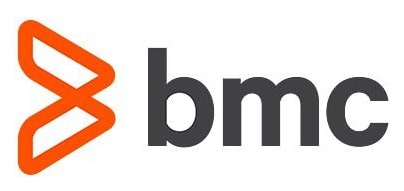
Control-M is another great workload automation tool by BMC. With this tool, you can make the process of data workflow orchestration simple on-premises or as a service.
Features:
- It helps you deliver faster outcomes and manages big workflows in a scalable way.
- It offers the feature of intelligent file movement and visibility with which you can control your file transfer operations.
- It makes use of the Jobs-as-Code approach and hence extends Dev and Ops collaboration.
Verdict: Control-M simplifies workflows across hybrid and multi-cloud environments. It also makes it easier to define, schedule, manage and monitor workflows.
Pricing: A free trial is available. Contact them for a quote.
#9. Broadcom CA IT Process Automation Manager

IT Process Automation Manager is a tool used for speeding up the delivery of IT services. With this tool, you can automate IT processes across multiple organizations and systems.
Features:
- It supports scalability, high availability, and fault tolerance on multiple platforms to simultaneously execute hundreds of processes.
- There will be fewer manual errors.
- This tool offers a flexible and easy-to-use data bus to support the most complex use case.
Verdict: IT Process Automation Manager helps you cut down operational expenses, increase staff productivity, speed up delivery of IT service, and enforce compliance policies.
Pricing: Contact them for a quote.
#10. SMA OpCon
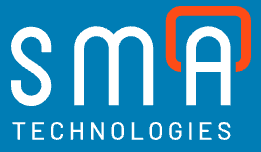
If you are looking to simplify the execution of crucial Financial Institution operations, then SMA OpCon is the best choice. It offers capabilities such as ACH processing, end-of-day processing, and share draft/checking account operations. With OpCon, you will be able to automate repetitive tasks.
Features:
- It helps you integrate with connectors for Symitar, Fiserv, and Corelation.
- You can also maintain real-time visibility and an audit of every step.
- It also enables you to eliminate manual key-entry errors.
- Completely automates disaster recovery.
Verdict: OpCon offers reliable and scalable automation of critical business operations. It accelerates digital transformation by integrating systems, applications, and people across the company.
Pricing: Contact them for a quote.
#11. Chef
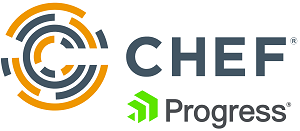
Chef is robust policy-based configuration management automation software for DevOps teams. It makes sure each system is configured correctly. Chef defines infrastructure as a code making the process of managing configurations and system state automated and testable. Automatic correction of configuration drift and universal application of configuration changes will be ensured by this tool.
Features:
- It offers simple declarative definitions for common tasks which can be easily extended to support unique environmental requirements.
- It will configure the systems against the desired state and make sure that every system is configured correctly and consistently.
- Enforce policy by converging the system to the state declared by the various resources.
- You can view and validate the intended and actual state across all systems.
- With this tool, you can execute ad-hoc remote configuration tasks, perform remote scanning, test software and dependencies, and much more.
Verdict: It is an excellent configuration management automation tool for Windows, Linux, Mac, and much more. It also ensures that the configuration policy is flexible, versionable, testable, and human-readable.
Pricing: They offer 3 pricing options, i.e., Chef Desktop, Chef Compliance, and Chef Product Suites. Contact them for a quote.
#12. Puppet
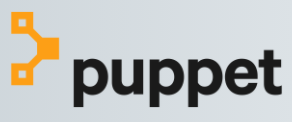
With Puppet, you can make infrastructure actionable, scalable and intelligent. It will also help you through event-driven automation. You can connect with cloud providers, DevOps tools, and other APIs. According to the signals from existing DevOps tools, Relay triggers the workflow that orchestrates actions on downstream services. You can create the right workflow by choosing the steps from the library of steps.
Features:
- It is open-source software.
- With the task orchestrator feature, spend less time on manual tasks.
- It offers 6,000+ Forge modules.
- Relay will provide bird’s eye view of all operations.
- You can add approval steps to your workflow.
- It also lets you automate and enforce the policy as code without sacrificing agility.
- Puppet Remediate by Puppet helps companies mitigate security risks by making vulnerability responses faster and more reliable.
Verdict: With this tool, you can eliminate manual data transfer between InfoSec and IT Ops, get a visual of your network to see which vulnerabilities pose a risk to your infrastructure, and run remediation.
Pricing: Contact them for a quote.
#13. Ansible

Ansible is a simple, agentless IT automation platform that provides the easiest way to automate apps and IT infrastructure. It deploys tasks, manages systems, and reduces complexity in automation. It is utilized for Application Deployment, Configuration Management, and Continuous Delivery.
Features:
- It manages complex deployments and speed up the productivity of the team.
- It can be used by anyone.
Verdict: Ansible is a fantastic enterprise automation platform that can be used across entire IT environments.
Pricing: It offers 2 pricing plans, i.e., Standard and Premium. Contact them for a quote.
#14. Jenkins

It is an open-source automation server. Jenkins offers many plugins to support building, deploying, and automating any project. It can be utilized as a simple CI server or turned into a continuous delivery hub for any job.
Features:
- It is a self-contained Java-based program.
- Jenkins is easy to set up and configured via its web interface.
- Its functions can be extended via its plugin architecture, providing nearly infinite possibilities.
Verdict: Jenkins is an extensible platform that provides many possibilities. Since Jenkins is a community-driven project, anyone can participate.
Pricing: Free to download
#15. Microsoft System Center

It simplifies deployment, configuration, management, and infrastructure monitoring. Microsoft System Center offers simple datacenter management to keep you in control of on-premises, in the cloud, or across platforms. The Data Center Edition is excellent for managing virtual servers, and Standard Edition is great for physical servers.
Features:
- It offers endpoint protection.
- It also incorporates Virtual Machine Manager and Operations Manager.
Verdict: It manages a large number of workstations or servers. As per customer reviews on various sources, it has a solid set of features and the best solution for Patch Management.
Pricing:
- Datacenter Edition – $3607
- Standard Edition – $1323
What is IT Automation?
IT automation refers to the use of software and tools to perform routine IT tasks and processes without human intervention. This can include everything from simple task scheduling to more complex workflows that involve multiple systems and applications.
Why Use IT Automation?
Using IT automation can significantly streamline how technology is managed within an organization. One of the main reasons to embrace IT automation is its ability to save time.
By automating routine tasks like software updates or data backups, IT teams can shift their focus from mundane activities to more strategic initiatives that drive business growth.
IT Automation not only speeds up these repetitive tasks but also reduces the chance of human error, ensuring tasks are completed accurately and consistently.
Additionally, IT automation can enhance service reliability and availability, as automated systems can operate continuously without the need for breaks.
Ultimately, implementing IT automation can lead to improved efficiency, higher productivity, and a reduction in operational costs, making it a valuable asset for any organization looking to enhance its technological capabilities.
Evolution of IT Automation
The journey of IT automation began with the need to simplify complex tasks and reduce human error. Initially, it focused on script-based automation, where tasks like scheduling and batch job execution were manually handled by IT personnel. This method, pioneering at the time, was cumbersome and error-prone.
As technology advanced, the mid-20th century introduced job schedulers, transforming the landscape by automating repetitive tasks. These early schedulers laid the groundwork for future tools by offering a more reliable way to manage workloads. However, they were limited in integrating with new technologies and required significant manual oversight.
In the digital age, the demand for versatile automation solutions led to the creation of standalone platforms. These solutions encompass various automation categories, including
- Workload Automation (WLA)
- IT Process Automation (ITPA)
- Business Process Automation (BPA)
- Big Data/Hadoop Automation
- Robotic Process Automation (RPA)
- Batch Process Automation/Managed File Transfers (MFTs)
- Batch Monitoring
How is IT Automation Software different from Workload Automation?
IT automation and workload automation are related concepts but serve different purposes within an organization’s technology landscape. IT automation focuses on automating specific IT tasks or processes, such as software installations, network configuration, or routine maintenance checks. It aims to streamline day-to-day operations and reduce manual intervention, leading to more efficient and error-free IT management.
On the other hand, workload automation is a broader concept that involves automating the scheduling and execution of business-critical tasks and jobs across various applications and systems. It manages complex interdependent processes and ensures that all necessary operations are completed in a predefined sequence, often involving multiple systems/platforms. Workload automation is typically used to ensure that important business operations, like end-of-day processing in financial services or large-scale data transfers, happen without a hitch.
In summary, while IT automation deals with specific technical tasks, workload automation handles the larger picture, ensuring coordinated execution of integral business processes. Both are essential for modern organizations but address different operational needs.
How is IT Automation different from IT Process Automation?
IT automation and IT process automation might sound similar, but they address distinct aspects of managing technology in organizations. Think of IT automation as a handy tool used to automatically perform individual tasks, like updating software or setting up new devices, which helps save time and reduce errors. It simplifies routine tasks so IT teams can focus on bigger priorities.
On the other hand, IT process automation takes things a step further by not only automating single tasks but also connecting them into a complete workflow. This means that multiple tasks are linked together to accomplish a larger goal—kind of like an assembly line where each step is needed to build the final product. IT process automation ensures that all those tasks run in coordination and in the correct order, making sure everything goes smoothly from start to finish.
So, while IT automation deals with making tasks easier and quicker, IT process automation looks at the bigger picture and ensures entire processes run seamlessly without hiccups. Both are super helpful, enabling IT teams to deliver better services with less manual effort.
What are the advantages of IT automation?
IT automation is a necessity for enterprises to navigate and manage the complex technological landscape. Additionally, it has several tangible advantages:
- Saves money: Fewer labor hours are required to complete routine tasks with the help of IT automation. It may also increase productivity, reduce infrastructure costs by optimizing resource utilization, and decrease costs related to human error.
- Time savings: By automating the many insistent and time-consuming tasks, IT employees free up their time to invest in higher-level tasks.
- Reduced mistakes: Automation ensures consistency on a big scale, something that’s not possible to do with individuals completing jobs manually.
- Better security: Automated processes require fewer individuals to check and safeguard sensitive information, which lessens the possibility of breaches. Also, IT automation may be used to assist IT teams keep up with an event response.
Common Challenges in IT Automation and How to Overcome Them
IT automation promises increased efficiency and reduced manual workload, but it’s not without its hurdles. Here, we’ll explore some common challenges and offer practical solutions to overcome them.
- Resistance to Change: Many teams are hesitant to adopt new technologies due to fear of the unknown or comfort with existing processes. To overcome this, it’s essential to provide thorough training and demonstrate the clear benefits of automation, such as time savings and process consistency.
- Complexity of Integration: Integrating automation tools with existing systems can often be complex and time-consuming. To tackle this, start with a detailed plan that maps out integration steps, and consider using middleware solutions that can act as a bridge between disparate systems.
- Lack of Skilled Personnel: Finding and retaining skilled IT professionals with expertise in automation can be challenging. A strategic approach is to invest in training current team members and offer them opportunities to upskill, fostering a culture of continuous learning and growth.
- High Initial Costs: Implementing automation can require a significant upfront investment. It’s crucial to conduct a cost-benefit analysis to demonstrate long-term gains to stakeholders. Consider starting small with pilot projects to prove value before scaling up.
- Security Concerns: Automated systems can be vulnerable to security breaches if not properly managed. To mitigate risks, ensure robust security measures are in place, regularly update software, and conduct security audits to identify and fix potential vulnerabilities.
Addressing these challenges head-on with the right strategies will help organizations successfully implement IT automation, leading to more efficient and resilient IT operations.
Conclusion
In conclusion, selecting the right IT automation software is pivotal for any organization’s success. With options like ActiveBatch, RunMyJobs by Redwood, Tidal Software, ManageEngine Endpoint Central, Stonebranch, Broadcom CA Atomic, and BMC Control-M, businesses can find a solution that best fits their specific needs.
These tools offer a range of capabilities from managing complex workflows to enhancing efficiency through endpoint management, ensuring that companies can operate seamlessly in a digital-first world.
By leveraging these technologies, organizations can accelerate their productivity, reduce operational costs, and stay ahead in an ever-evolving landscape. Embracing the best automation software empowers businesses to focus on innovation and strategic growth, making it an indispensable part of any forward-thinking IT strategy.
Related posts:
- Best IT Process Automation Software
- Workload Automation vs Workflow Automation: What’s the Difference?
- Best Workload Automation Tools (Free and Paid)
- Best Windows Job Scheduling Software
- Best Free Disk Partition Software to Manage Windows Hard Disks
- Best Firewall Audit Software
- Best Firemon Competitors
- Best Network Security Policy Management Tools
- Best Help Desk Software
- Best APM Tools (Application Performance Monitoring Tools)
- Best DevOps Monitoring Tools
- Best IT Automation Tools
- Best Symantec DLP Alternatives
- Best McAfee DLP Alternatives
- Best Forcepoint DLP Alternatives
- Best Digital Guardian DLP Alternatives And Competitors
- Best Device Control Software
- Best Data Loss Prevention Software
- Best Burp Suite Alternatives (Free and Paid)
- Best Nessus Alternatives
- Best Vulnerability Assessment Scanning Tools
- Best IT Asset Management Software

